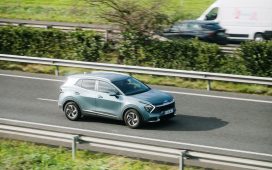However, motorists are still concerned about EVs, with the World Economic Forum recently raising concerns over high upfront costs and limited access to charging points.
The AA, well-known for its bright yellow vans, received 83,000 callouts by EV drivers in the year ending October.
The most common reason, or around 21.5pc of those emergencies, was related to tyre issues.
Problems charging the battery accounted for 19.8pc while problems charging the standard 12v battery was 16.8pc.
Despite a fall in battery callouts, AA’s main rival RAC warned that it expects to deal with more flat batteries in January as workers return to the office.
The RAC predicted that 28pc of the breakdowns it will attend on January 2 will be for flat batteries.
Despite the rapid take-up of EV vehicles, officials and policymakers have recently rolled back on assumptions that EVs will quickly become the dominant form of vehicle on UK roads.
In November, the Office for Budget Responsibility slashed its forecasts for new EV sales, predicting that by 2027 38pc of new car sales would be for electric models – down from a forecast of 67pc.
It said in the absence of low-cost EVs, the steep sales growth of the past few years was expected to slow.
Prime Minister Rishi Sunak also pushed back a ban on the sale of new petrol and diesel vehicles to 2035 from the original deadline of 2030 earlier this year.
Under the Government’s Zero Emission Vehicle (ZEV) mandate, at least 22pc of all new cars sold by car manufacturers in 2024 must effectively be electric-powered.
This increases in a tiered system until 2035 when 100pc of cars sold in Britain must be electric.











